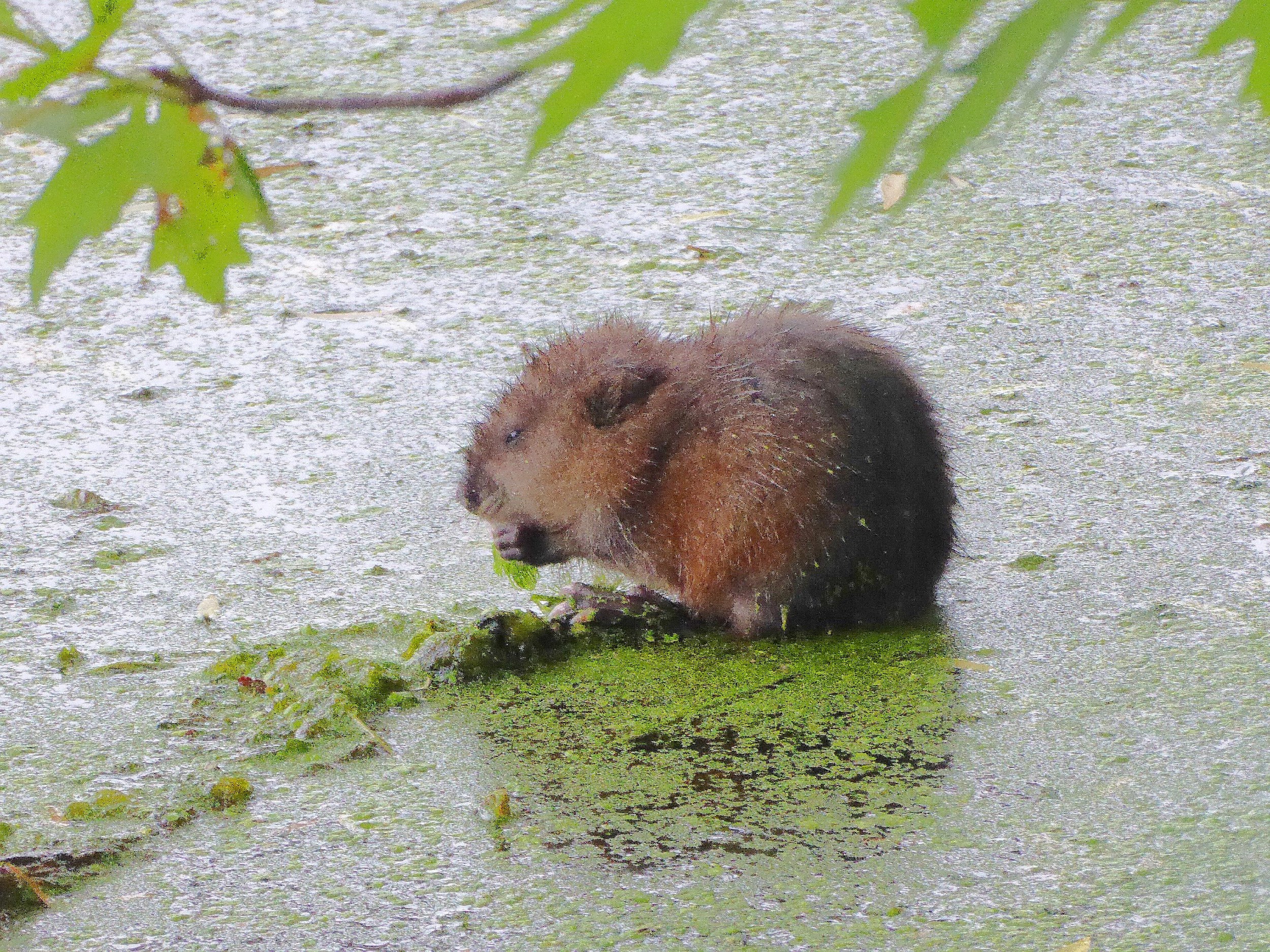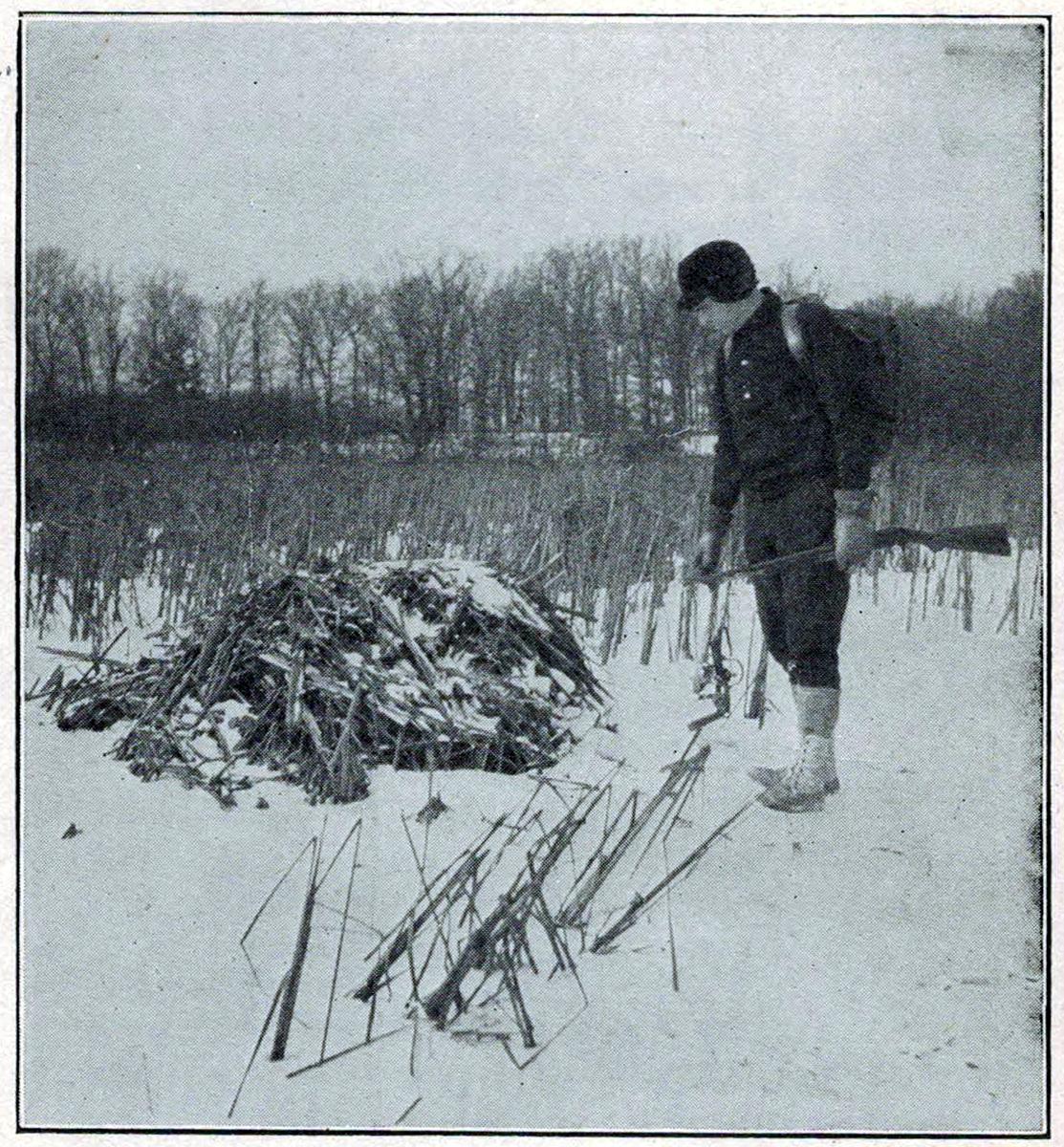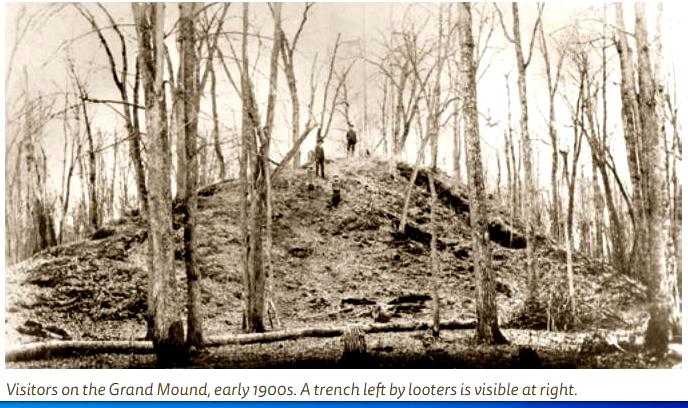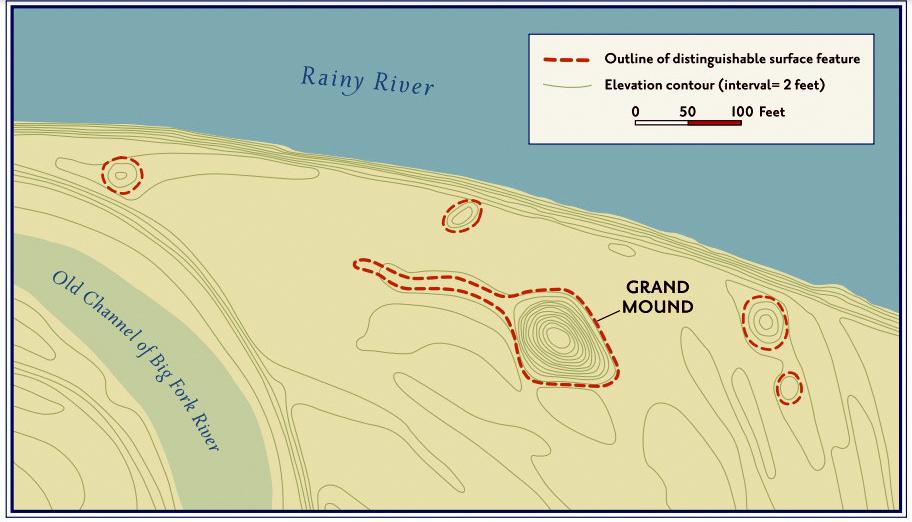By Bob Suchanek
Waters and Wetlands Steward

A Munching Muskrat
Photo Credit - Bob Suchanek
Now, we rejoice. The news, after all, is not that muskrats are wary, but that they can be seen. - Annie Dillard
We walk around the lake almost every day. The many wild residents are accustomed to human visitors and we're often treated to close encounters of the aquatic kind, including turtles, ducks, frogs and muskrats. Opinions vary, but I think the busyness of muskrats makes them the most appealing members of that wetland crowd.
The muskrat is a very successful rodent. The fossil record for the muskrat genus goes back some 4 million years, at least a million years more than humans. Modern muskrats are the only remaining members of their genus but fear not, they are in no danger of extinction; an individual female may produce nearly 2 dozen young in a year.
Strictly speaking, muskrats aren't rats. They're more closely related to voles and lemmings and are the largest members of that bunch. The origin of the name “muskrat” seems a bit problematic but they do produce a musky pheromone and they do superficially look like rats.
Muskrats are well adapted to both life in water and on land. I often see swimming muskrats, and nearly as often they disappear and test my patience by swimming underwater until I move on. Muskrats don't hibernate and are busy during all seasons. The muskrat's year-round land and water life-style is aided by their ability to maintain different temperature zones in their bodies. A muskrat can move from cold water to land and back without a shiver. The muskrat diet is mostly plant based (cattails, duckweeds, water lilies, etc.) but they won't pass up tasty critters (clams, snails, frogs, etc.) that are inattentive or slow.
Muskrats often live in dens dug in banks that surround marshes or lakes but when suitable burrowing locations aren't available they build lodges out of cattails. Beavers build similar lodges but use sticks and logs.

A Muskrat Lodge
Source: Practical Muskrat Raising by E.J. Dailey, 1927
Muskrats are uniquely North American mammals and hold an important place in Native American legends and cosmology. For example, the Ojibwe Creation of the World:
Wenebojo, having outwitted the evil manidog by trickery, at last found himself stranded in the pine tree. He crept higher, begging the tree to stretch as tall as it could. Finally the waters stopped just below Wenebojo's nose. He saw lots of animals swimming around and asked them all, in turn, to dive down and bring up a little earth, so that he and they might live. The loon tried, then the otter and the beaver, but all of them were drowned before they could bring back any earth. Finally, the muskrat went down, but he too passed out as he came to the surface.
"Poor little fellow," said Wenebojo, "You tried hard." But he saw the muskrat clutching something in his paw--a few grains of sand and a bit of mud. Wenebojo breathed on the muskrat and restored his life, then he took the mud and rolled it in his hands. Soon he had enough for a small island and he called the other animals to climb out of the water. He sent a huge bird to fly around the island and enlarge it. The bird was gone four days, but Wenebojo said that was not enough, and he sent out the eagle to make the land larger. Having created the world, Wenebojo said, "Here is where my aunts and uncles and all my relatives can make their home." - Ojibwe Oral Tradition

Source: MN History Magazine
Minnesota archaeologist David Mather has shown that Grand Mound, the largest ceremonial mound in Minnesota, is a 3 dimensional effigy of a muskrat. The mound is huge and ancient; around 25 feet high, 100 feet wide, 200 feet long (including the tail) and was constructed over a period of several centuries and completed about 600 years ago. The surrounding site has been in use for thousands of years.
There is a powerful connection between American Indians and the land and waters surrounding the grand muskrat mound, a relationship that dates back millenia to the time when people lived on the shores of a great glacial meltwater lake.
Three hundred miles to the north and west of Grand Mound stands another giant muskrat mound called the Westbourne Mound. Mather likes to “imagine the two giant muskrats climbing out of their marshes, near the western and southern shores, respectively, of Glacial Lake Agassiz. The edges of the giant lake may have always been good habitat for real muskrats. They unquestionably became so once it began to drain.”

Grand Mound from above
Source: MN History Magazine
“No matter that marshes have been drained and their homes destroyed in the name of progress, the muskrats continue to grow and multiply. The Creator has made it so muskrats will always be with us because of the sacrifice that our little brother made for all of us many years ago when the Earth was covered with water.” - Benton Banai, Ojibwe Elder
Sources:
Dailey, E.J. Practical Muskrat Raising. Columbus OH: A..R. Harding. 1927
Dillard, Annie. Pilgrim at Tinker Creek. New York, NY: HarperCollins. ISBN 0-06-095302-0.
Mather, David. Grand Mound and the Muskrat, A Model of Ancient Cosmology on the Rainy River
http://collections.mnhs.org/mnhistorymagazine/articles/64/v64i05p194-205.pdf
Milwaukee Public Museum Ojibwe Oral Tradition http://www.mpm.edu/content/wirp/ICW-141
https://www.wcupa.edu/sciences-mathematics/biology/fFish/documents/1979CBPMuskratThermo.pdf